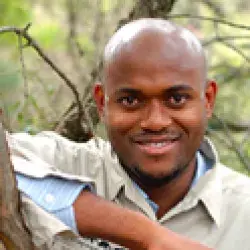Visiting East African Carnivore Projects
Towards the end of August I visited other AWF’s large carnivore projects. The idea was that I could learn from other well established projects and see how different/similar land-use practices between East Africa and South Africa are. The projects include the lion project in the Maasai Steppe Heartland (Tanzania) and the wild dog project in the Samburu Heartland (Kenya).
Date: 16 – 19th August
I first visited Maasai Steppe Heartland where Bernard Kissui is doing lion research in Tarangire National Park. The place is very beautiful. I’ve never seen so many baobab trees in one place. There are also no fences. This means wildlife and humans pretty much share the same resources. That is unheard of where I come from - everything is fenced in!
[caption id="attachment_126" align="aligncenter" width="300" caption="A Maasai Boma that Kissui will fortify to make predator-proof."] [/caption]
[/caption]
Bernard is working with the villagers around the Park. He is working at convincing the locals to fortify their bomas (what we call kraals in South Africa). The problem here is that lions, hyenas, and leopards often raid these kraals, sorry “bomas”. Most of the time however, it is the lions that get to face the sharp ends of the Maasai spears. As a result, the future of the lions is quickly becoming bleak. Bernard is therefore faced with a mammoth task to convince the people (who appreciate him dearly!) to strengthen their kr…bomas.
I went with Bernard on one of the boma building activities and helped to dig holes for the logs to make a skeleton for the chain link. I tried to dig as well, but came across a rock. I looked at the owner of the boma. I was hoping he would sympathise with me, but instead he mumbled something in Ki-Swahili about a man or woman. Worried that I may be denting the image of my fellow South Africans I dug away at the rock/the hard place. Talk about pressure!
Results: no results, except of course a huge blister on my hand.
[caption id="attachment_127" align="aligncenter" width="277" caption="Kissui (center) at work."] [/caption]
[/caption]
I was relieved to hear Bernard say it was time to leave. We then went to the other bomas. With the blister in my hand I did very little…more injustice done to southern Africans. We later went back to the place of the “rock” with some of Bernard’s guests who were interested in his work. I was impressed that all the holes were dug and ready for the logs. I secretly examined my abandoned hole to see if somebody had worked on it in my absence. The rock still stood there, strong! I caused myself bodily harm and the locals left the rock in peace, great!
Lesson learned: Between South Africa and Tanzania ROCKS ARE A CONSTANT.
I’m now trying to use what I learned from Bernard and attempt to fit it in to the South African context. In South Africa however, everything is fenced in, but cats are not so easy to keep confined. Also, reports of human and wildlife conflicts are sparse and wide.
Next stop: Samburu Heartland, Kenya.
